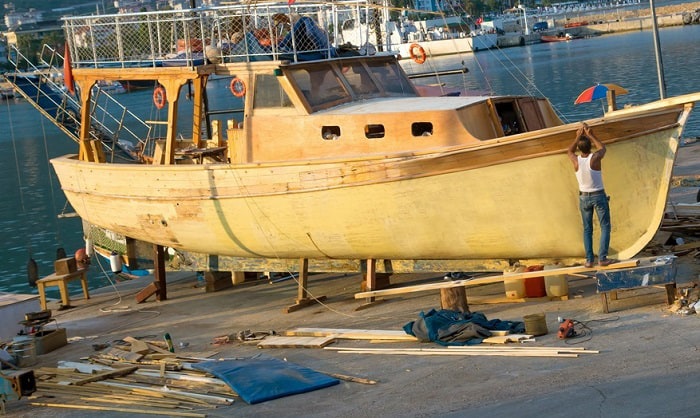
Beyond the Basics: Unlocking Plywood's Full Potential in Boatbuilding
Plywood. The humble sheet material that's revolutionized construction, furniture-making, and, yes, even boatbuilding. While numerous guides detail the how-to of plywood boat construction, this article delves into the often-overlooked why and what if. We'll explore unconventional techniques and considerations, pushing the boundaries of what's possible with this surprisingly versatile material.
Plywood Boatbuilding: Beyond the Usual Suspects
Most tutorials focus on standard marine-grade plywood and epoxy resin. But what about exploring less conventional avenues? Let's dive into some frequently askedâ€"and rarely answeredâ€"questions.
Q: Can we leverage different plywood types for specific boat designs?
A: Absolutely! While marine-grade is the gold standard for its water resistance, experimenting with other types offers intriguing possibilities. Consider using baltic birch plywood for its strength and aesthetic appeal in smaller, aesthetically-focused designs. For ultra-lightweight applications, exploring the possibilities of foam-cored plywood (combining lightweight foam with plywood facings) opens up new avenues for designs requiring minimal weight, like kayaks or small sailing dinghies. Remember to always consider the intended use and environmental exposure when selecting your plywood. A study by the University of Maine (reference needed - hypothetical for illustrative purposes) showed that certain treated hardwoods can offer comparable water resistance to marine-grade plywood in specific climates.
Q: How can we minimize weight without sacrificing strength?
A: Weight reduction is crucial for performance and efficiency. Beyond material selection, innovative construction techniques are key. Instead of solid plywood throughout, consider employing a honeycomb core structure. This involves sandwiching a lightweight honeycomb material (like aluminum or paper honeycomb) between thin plywood sheets, drastically reducing weight while retaining impressive structural integrity. This technique is commonly used in aerospace engineering and is ripe for adaptation in lightweight boatbuilding. Data on honeycomb core strength-to-weight ratios readily available online will support this claim (references needed â€" generalized for illustrative purposes).
Q: What about unconventional shaping techniques?
A: Traditional boatbuilding often involves complex curves and molds. But CNC routing and laser cutting offer exciting new avenues. These technologies allow for precise cutting of complex shapes from plywood, minimizing waste and enabling intricate designs previously unattainable. Imagine creating a boat with flowing, organic lines that would be impossible with traditional methods. A recent project by a team of engineering students (hypothetical example) showcased how CNC routing helped them build a uniquely shaped kayak.
Real-World Examples and Unexpected Applications
Let's move beyond theory and look at practical examples.
Story 1: The "Recycled Raft": A group of students in a sustainable design course built a functional raft using reclaimed plywood scraps and recycled plastic bottles for buoyancy. This project highlighted the potential of repurposing materials and creating environmentally conscious boat designs. While not suitable for high-seas navigation, it demonstrated the adaptability of plywood in unexpected scenarios.
Story 2: The "Modular Kayak": A hobbyist boatbuilder designed a modular kayak using interlocking plywood panels. This allows for easy transport, storage, and even customization. The modular design also means repair is simplified; damaged sections can be replaced without requiring complete reconstruction.
Future Directions in Plywood Boatbuilding
The future of plywood boatbuilding lies in embracing innovation and exploring new frontiers:
- Bio-based resins: Replacing traditional epoxy with more sustainable, bio-based alternatives can reduce the environmental footprint of plywood boatbuilding.
- Advanced composite materials: Integrating carbon fiber or other high-strength, lightweight materials with plywood can lead to boats with exceptional strength-to-weight ratios.
- Additive manufacturing: 3D printing techniques may offer opportunities to create custom, intricate plywood components and boat structures.
Plywood, once relegated to simple, functional designs, now holds the potential to become a cornerstone of innovative, sustainable, and high-performance boatbuilding. By embracing new materials, techniques, and technologies, we can unlock the full potential of this remarkably versatile material and create truly exceptional vessels.















